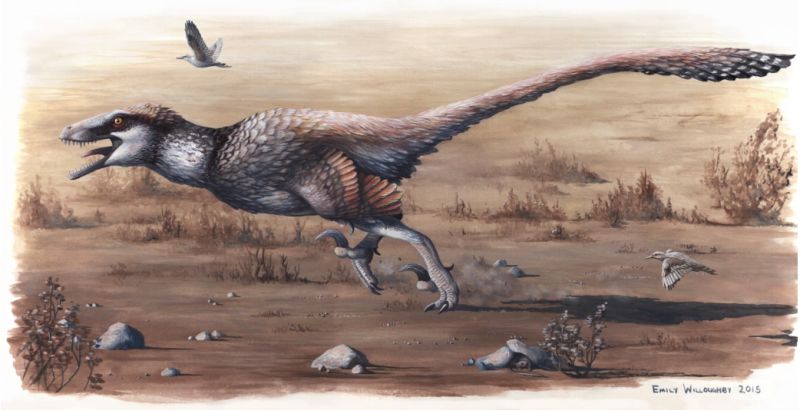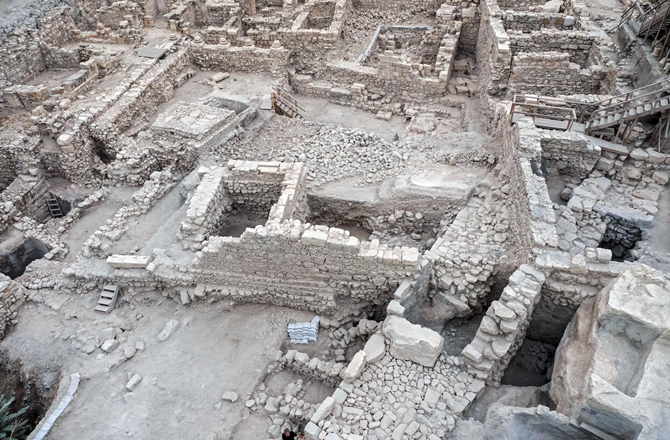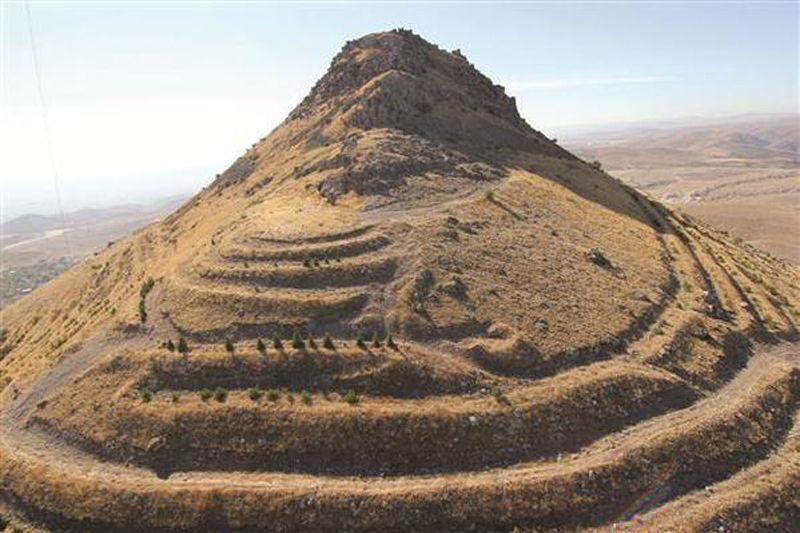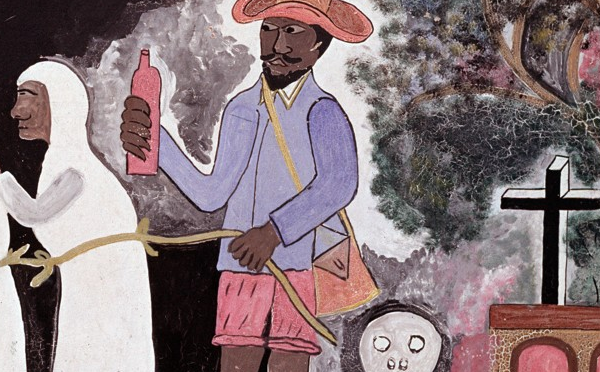
© Emily WilloughbyAn illustration of Dakotaraptor steini running with sparrow-size birds (Cimolopteryx petra) during the Late Cretaceous, about 66 million years ago.
Sixty-six million years ago, a giant raptor with feathered arms chased prey around the ancient South Dakotan landscape, according to a new study.
Researchers named the newly identified species
Dakotaraptor steini, after the state and the Dakota First Nations Tribe, as well as raptor, which is Latin for "plunderer." The species name also honors paleontologist Walter Stein, said the researchers, who found the remains in South Dakota's Hell Creek Formation, a famously fossil-rich area.
Dakotaraptor is one of the largest known dromaeosaurids (raptors) on record, according to D-Brief, a
Discover Magazine blog.
An analysis of the dinosaur's partial skeleton suggests it measured 16 feet (4.9 meters) long, making is larger than the turkey-size
Velociraptor, but smaller than the 22-foot-long (6.7 m)
Utahraptor, D-Brief reported.
Dakotaraptor also had "quill knobs" or papilli, on its ulna (arm bone), which
"is our first clear evidence for feather quills on a large dromaeosaurid forearm," the researchers wrote in the study, published online Oct. 30 in the
journal Paleontological Contributions. It's unlikely
Dakotaraptor could fly given its large size, but perhaps it used its feathers for display or to keep its eggs warm, D-Brief reported.




Comment: Zombie fad: Do we love the undead because we are unhappy with the government?
A History of 'Real' Zombies